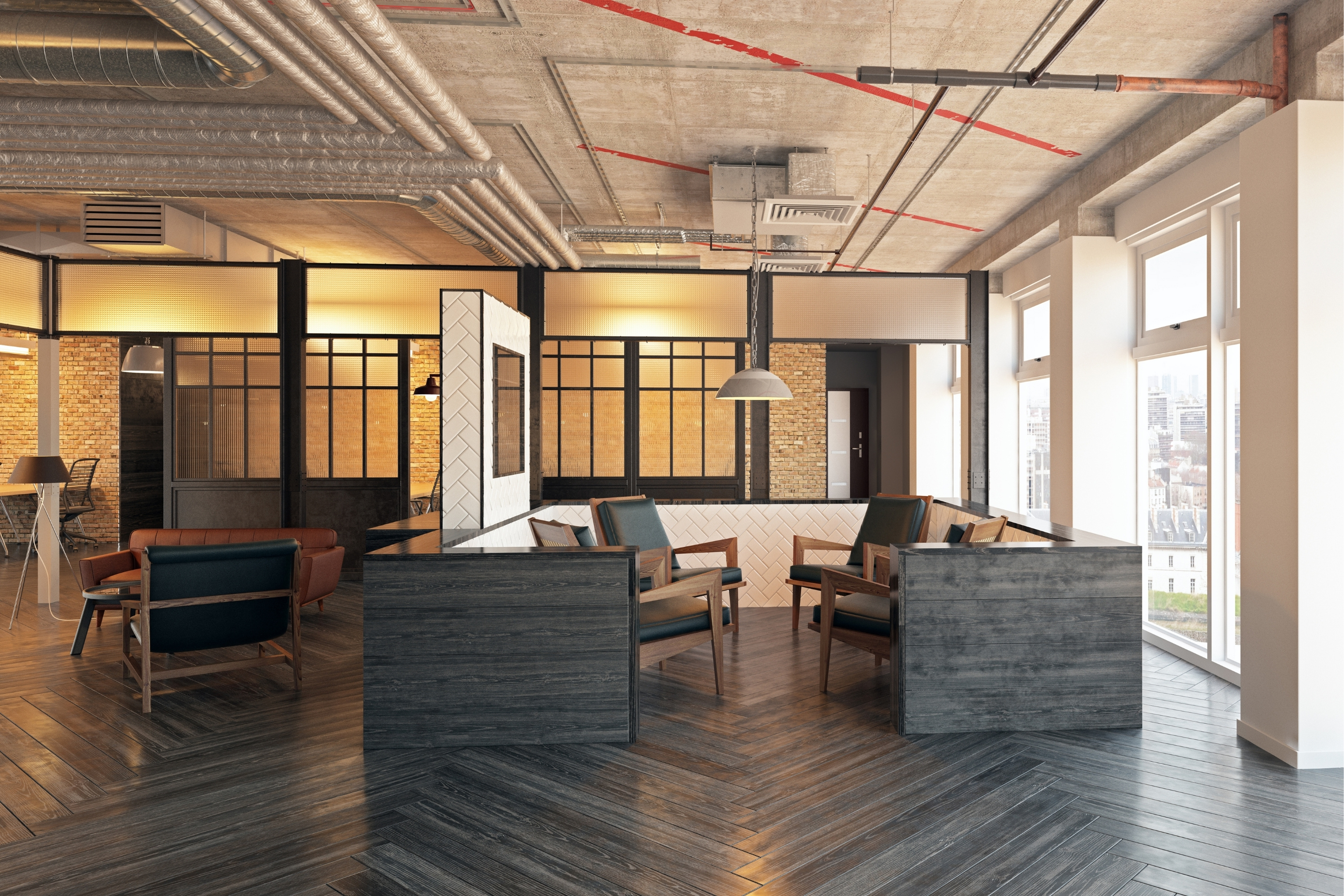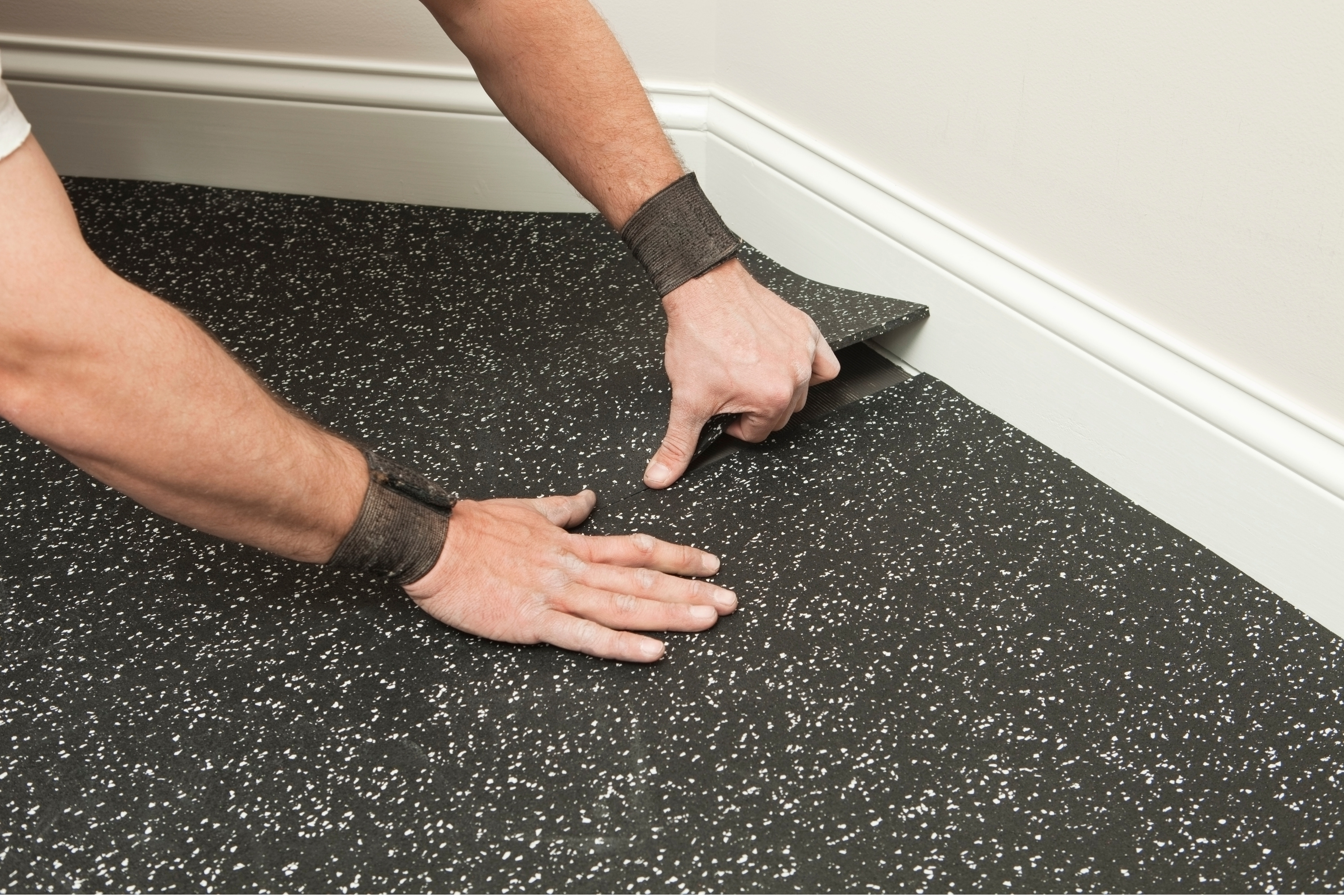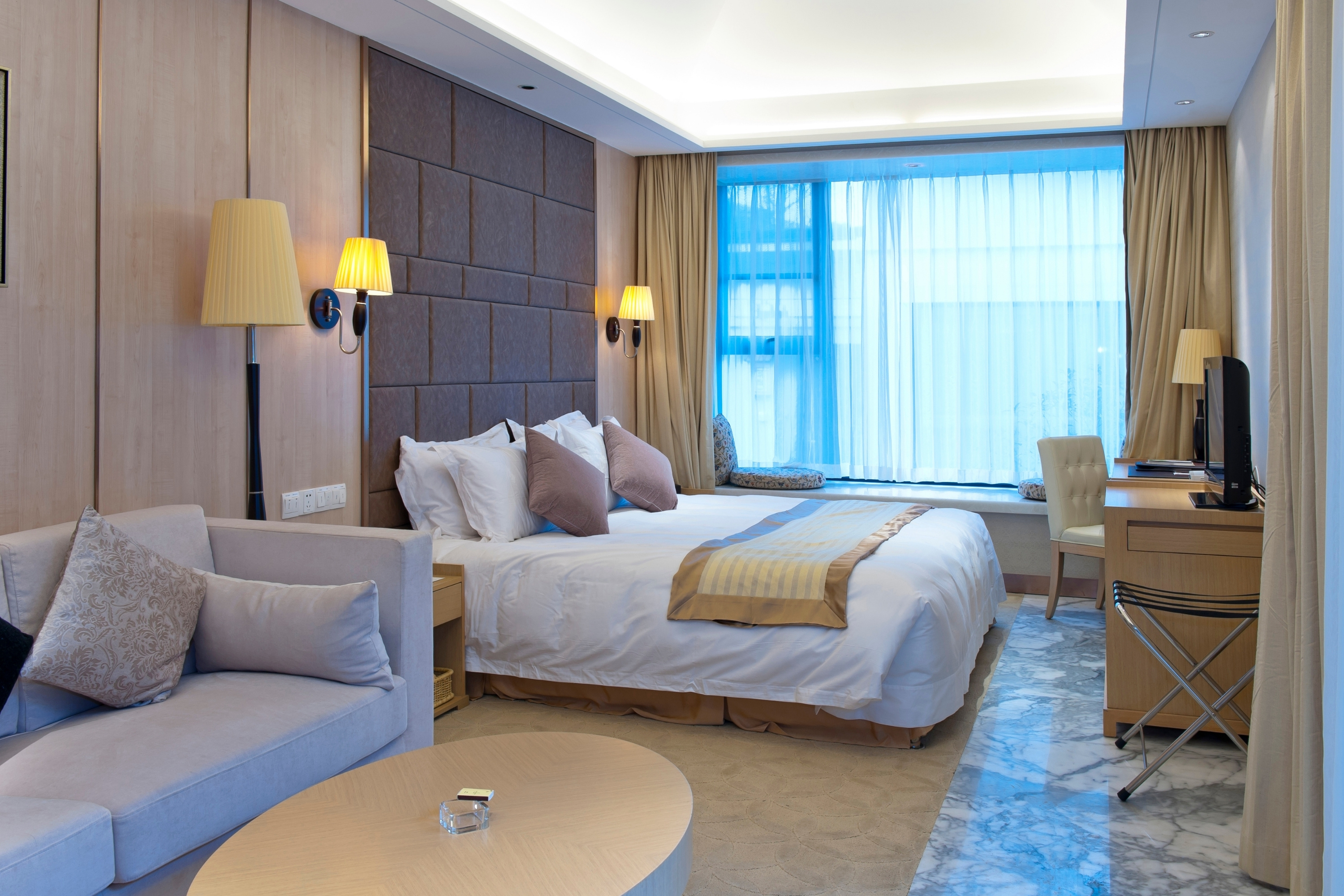Design, Function, Aesthetics: Floor Selection in Hotels
14/05/2024
Architectural design for hotels takes into account factors such as aesthetics, functionality and usability in order to maximize the comfort and satisfaction of guests. In parallel, the choice of flooring should prioritize comfort and functionality. Floor coverings play a key role in establishing the spatial atmosphere. Therefore, the choice of flooring materials in hotels requires qualified needs planning and a holistic design language.
When it comes to hotels, flooring is critical in many ways. When you step into a hotel, the flooring is the first thing that attracts attention. Floors that guests can walk easily, can be easily cleaned and meet hygiene standards should be preferred. In addition, the sound insulation feature of the floor material should also be taken into consideration, because it is important that the guests staying in the hotel stay in a quiet and peaceful environment. In terms of spatial design language, the color, style and pattern of the selected floor as a whole is another factor in the selection. In addition, the flooring should be selected with regular and intensive circulation in mind, and the durability of the material should be adopted as a priority need.
A Warm Atmosphere: Carpet Flooring
Carpet flooring is a traditional and popular flooring choice for hotels. It usually evokes a warm atmosphere with its appearance, warmth and texture. In addition, the comfort it offers is another reason why this flooring is common in hotel rooms.
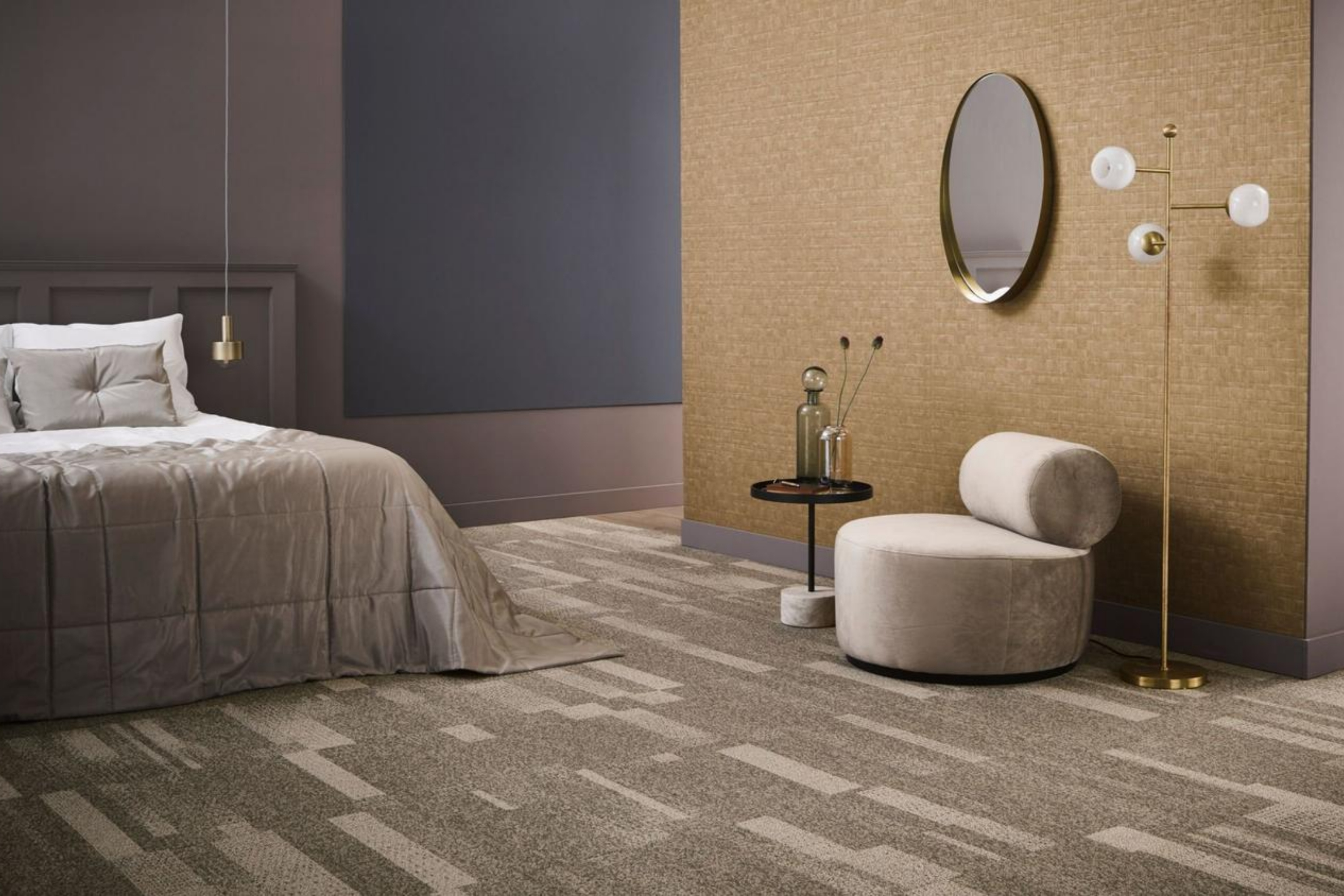
Image taken from proffessionals.tarkett.com.
There is always a need for soundproofing in hotel rooms. Acoustics in a hotel are key to a good night's sleep and carpeting plays an important role in helping to prevent sound transmission between adjacent rooms and interiors. Academic studies emphasize the importance of ergonomic principles in the layout of hotel rooms and recommend creating spaces that suit the needs of guests. Carpet flooring for hotel bedroom flooring is ideal for promoting a peaceful environment while encouraging feelings of comfort and relaxation. In recent years, it can be said that the design range and product variety of carpets has been gradually expanding. When it comes to installation, carpeting is less time-consuming and more cost-effective than other types of flooring.
The hotel lobby and common areas are the areas that guests use for resting, socializing and waiting. In order to create a warm and inviting atmosphere in these areas, in addition to wooden floors, qualified carpet flooring alternatives are also preferred. The acoustic properties of the floor are also a priority for these areas.
A Distinguished and Intimate Style: Hardwood Flooring
Flooring has the advantage of adapting to a wide range of design languages with its wide range of textures, patterns and colors. Wood is a striking and exclusive option that adds character and charm to the ambience of the space and is often preferred in hotels. A popular flooring option for reception areas and meeting rooms, wood flooring has the potential to offer both a luxurious look and style and the ability to create a warm spatial atmosphere. Depending on the design language of the space, calmer patterns can be preferred, or it is possible to make the floor the leading role thanks to the use of various wooden patterns. Dendro Atelier Collection is an example of this with its unique patterns and details. In addition to the classic and timeless qualities of parquet flooring; these floors can be considered as a determining component for a unique space.
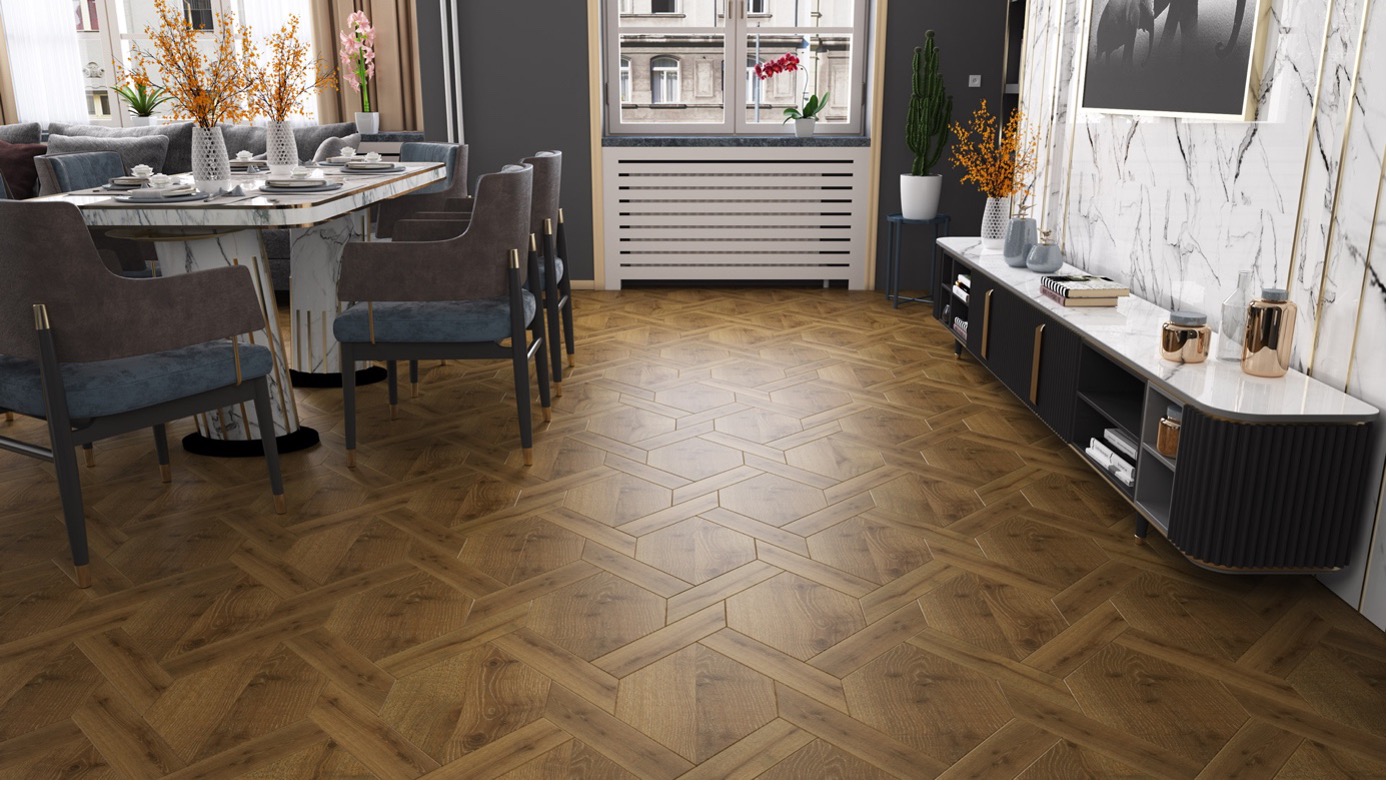
Dendro Atelier (Patterns) Collection – Cesta-D79
Research has shown that the colors, materials and textures used affect the emotional and psychological experiences of guests. Architectural details are carefully selected to reflect the hotel's brand identity and offer guests an unforgettable experience. Every element of a hotel room, from the walls to the furniture and floor, contributes to the aesthetic integrity. The flooring needs to complement the décor of the space, be pleasing to the eye and give the same sense of luxury as the rest of the design. A wooden floor has the advantage of providing an effective linguistic unity in the space in combination with wooden furniture. This alternative also increases the impact of the floor. A dialogue of colors and textures, especially in prominent places such as corridors and reception areas, has a positive effect on the aura of the facility. Engineered wood flooring can also enhance critical areas such as lobbies and great halls with its timeless design.

Image taken from lxhausys.com.
Aesthetics in hotel architecture is an important element that makes the time guests spend in the hotel more enjoyable. Hotel restaurants and dining areas are places where guests have a pleasant time. Therefore, atmosphere creation gains priority in these areas. Here, the choice of floor is important in terms of aesthetics and practicality. Engineered wood flooring is resistant to stains, scratches and fading. In this way, its performance is high in terms of daily wear and tear with intense circulation. Therefore, it presents itself as a suitable option. For more detailed information on the subject, you can visit our blog post on "Hardwood Floor in Restaurants".
A Comfortable and Economic Choice: Rubber Floor
There are many reasons why this type of flooring is preferred in hotel rooms. Rubber flooring is known for its three main properties: soundproofing, buffering and insulation. This flooring can be suitable for situations where guests are looking for a tranquil experience.
In addition, rubber flooring offers advantages such as ease of maintenance, effortless cleaning and lasts for years, even in high traffic areas. Although the appearance it offers does not meet an exclusive and luxurious spatial atmosphere, it is an economical option that creates a cozy atmosphere. Being a water-resistant choice makes rubber floors a suitable flooring alternative for hotels. Rubber flooring is generally preferred in the spa and fitness areas of hotels as its sound insulation and non-slip properties are at the forefront.
Aesthetic and Practical: Ceramic Tile
From a durability and aesthetic point of view, ceramic tiles are a good choice for hotel room floors. These floors are easy to maintain as they are both waterproof and non-absorbent. Ceramic tiles also provide convenience during the application phase, and there is no problem with stains. Therefore, it is one of the most hygienic options and has a high durability. On the other hand, it can be said that its installation is not economical.
Ceramic tiles have been a popular choice for hotel businesses for years. It does not require the use of any special products for cleaning. Daily cleaning products on the market are sufficient. Since hygiene is a determining factor for hotels, this quality is important in terms of floor selection. In this sense, with its hygienic and practical qualities, it is often preferred in spa and fitness areas of hotels.
The variety of colors, patterns and textures offered offers flexibility in terms of design and the atmosphere of the space. If a tile breaks, the ability to easily replace the broken tile creates an advantage in long-term use. Qualitatively selected ceramic tiles in harmony with the design line of the hotel have the potential to revitalize hotel spaces.
Architectural design for hotels takes into account factors such as aesthetics, functionality, sustainability and technology to maximize guest comfort and satisfaction. A good and harmonious floor covering is an important component of these design principles. Choosing the right flooring for your hotel drives the spatial atmosphere and design and has a significant impact on durability.
References
